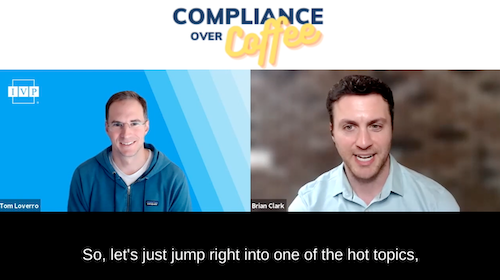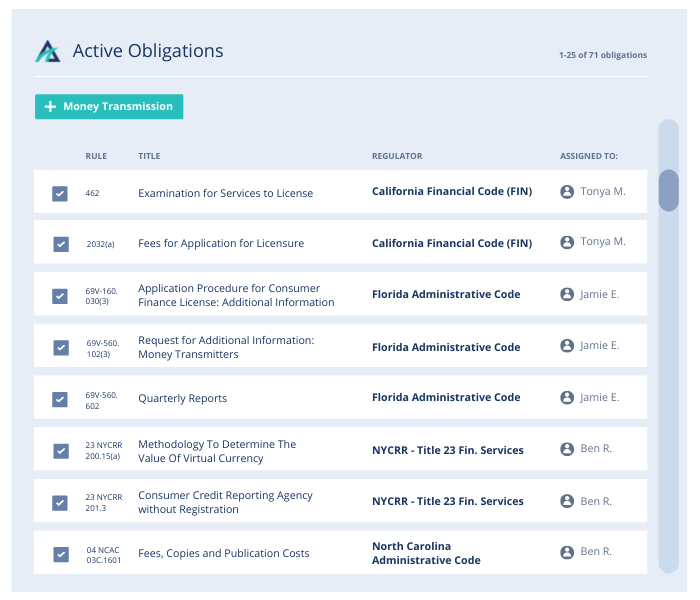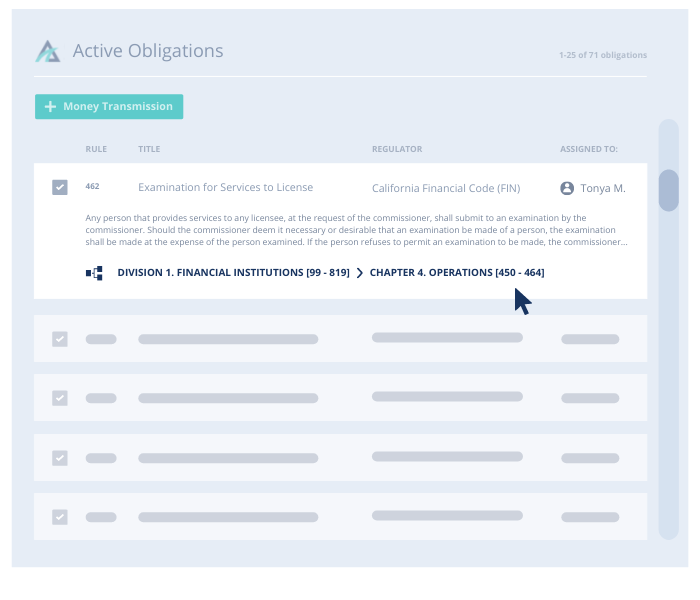Updated September 2021: As the COVID-19 pandemic continues, the information on this page may change as organizations adapt their in-person plans for safety reasons. We will continue to update this page as event updates are released.
At Ascent, our team stays on top of the latest developments in regulatory risk and compliance by attending and participating in important industry conferences throughout the year, where we both exhibit and help to shape thought leadership and content. Below is our ultimate list of compliance conferences.
Know of a great event that’s missing? Drop us a line at marketing@ascentregtech.com and we’ll add it to the list!
—
Compliance and Risk Management
Society for Corporate Compliance & Ethics (SCCE) Annual Compliance & Ethics Institute (Las Vegas, September 19-22, 2021) | 1,400+ compliance and ethics professionals gather for this cross-industry education and networking event. Attendees explore real-world compliance issues, practical applications, emerging trends, and state-of-the-art techniques for managing corporate compliance and ethics programs.
ACA Compliance Group’s Fall Conference (Virtual, September 21-22, 2021) | 300+ senior compliance, technology, finance, and operations professionals from financial services firms attend. Topics covered include regulatory compliance, cybersecurity, performance, technology, anti-money laundering programs, and more.
The IIA 2021 Financial Services Exchange (Hybrid—Washington D.C. and Virtual, September 27-28, 2021) | The Financial Services Exchange is the event for internal auditors to learn and share leading practices to navigate through the associated risks.
COMPLY Summit Roadshow (Dallas, October 6, 2021) | regulators, compliance and risk professionals, sales and marketing leaders, innovators, investors, and legal experts attend to share ideas at the intersection of compliance and technology. Billed as a combination of “information, entertainment, and fun.”
2021 RMA Annual Risk Management Virtual Conference (Virtual, October 25-28, 2021) | This year’s event theme this year is ADVANCE. All sessions will help risk professionals in the banking industry get an advanced view of emerging risks and actionable content to help them advance their understanding of today’s challenges.
National Society of Compliance Professionals (NSCP) National Conference (National Harbor, November 8-10, 2021) | 800+ compliance professionals attend, featuring regulatory panels with speakers from SEC, FINRA, MSRB, NFA, and NASAA, continuing education courses, and more than 60 break-out sessions for specialized discussion and networking. *Ascent’s Jilaine Bauer will participate in a panel called “Innovation or Disruption? The Impact of FinTech and RegTech on Compliance Programs” on Nov. 8.
Forrester Security & Risk Summit (Hybrid—Washington D.C. and Virtual, November 9-10) | The Forrester Security & Risk Summit helps security and risk professionals stay on the forefront of what’s next both in technology and the role of trust in business and public perception.
Gartner Security & Risk Management Summit (Virtual, November 16-18, 2021) | This two-day event provides valuable insights and a comprehensive update on cybersecurity threats and solutions, vulnerability management, ransomware and best practices for cloud security and more.
FIRMA 2022 National Training Conference (Nashville, May 1-5, 2022) | Audit, risk and compliance, and regulatory professionals gather to learn about the issues facing the industry and to discuss cross-functional risk management.
Compliance Week 2021 (TBD) | 500+ compliance leaders from across various industries (not just finance) attend. Features interactive sessions discussing strategies and best practices for running a dynamic and effective ethics and compliance program.
GRC/IRM User Conferences
Archer Summit (Hybrid—Orlando and Virtual, September 13-15, 2021) | A two-day program that focuses on learning, connecting and being inspired by Archer visionaries, customers and partners. This conference aims to help attendees discover where the risk management industry is going and how Archer products and services can help them deliver managed digital risk and transformation.
Riskonnect’s Konnect Conference (Hybrid—Atlanta and Virtual, September 20-22, 2021) | A two-day program that focuses on the latest risk management industry innovations, strategies, real-world challenges, and solutions. Attended by risk management leaders who are energized to transform the world to reduce risk, increase efficiency, and improve organizational performance through positive change.
Onspring Connect (In person, Orlando, September 20-22, 2021) (Virtual, September 28-30, 2021) | A two-day program that highlights Onspring’s latest innovations, as well as tips and advice from super users. The event provides “challenge” practicums and actionable intel from industry leaders that can apply to attendees’ businesses.
LogicGate Agility (Virtual, September 23-34, 2021) | Over the course of a day and a half, attendees will learn how to manage existing risks, stay ahead of new risks, and future-proof their organization’s approach to risk. This event includes keynote speakers, panel sessions, and breakout groups to help attendees reimagine risk.
ServiceNow Knowledge 2022 (May 1-5, 2022) | An event that helps attendees explore the endless possibilities of workflows and discover how to transform their businesses.
MetricStream’s GRC Summit (TBD) | Attended by +2,000 attendees from across governance, risk, compliance, audit, and IT. The event features keynotes from prominent global leaders along with panel discussions, case studies, and deep-dive workshops from domain experts, practitioners, and independent analysts.
SAI360 Customer Summit (TBD) | A three-day event that focuses on the future-state of SAI360’s Risk and Compliance solutions, features SAI360 executives and industry experts, and provides an opportunity for industry networking.
FinTech and Financial Innovation
Finovate (Various locations, year-round—NYC, September 13-15, 2021) | A series of global conferences highlighting the future of FinTech solutions through short-form demos of new products and discussions with industry thought-leaders.
Boston FinTech Week (Hybrid—Boston and Virtual, September 28-October 1, 2021) | Explore new technologies and new ways of doing business, with an eye on sustainable finance, inclusivity, environmental, social, and corporate governance, decentralized finance, and — of course — the post-COVID future. Topics of note: DeFi, sustainable finance, insurtech, embedded finance, regtech, ESG, financial health and much, much more.
Financial Data Innovation Conference (Virtual, October 5, 2021) | This three-day event is geared toward data management executives—from the biggest buy and sell-side firms, to retail banks and small asset managers, helping to connect them with their peers and to generate new ideas to improve data quality, innovate with data, and deliver value to the business.
Empire FinTech Conference (NYC, October 19, 2021) | Join over 600 attendees for the highlight of New York FinTech Week, the Empire FinTech Conference. A packed day of demos, keynotes, live podcasts, and networking showcasing the latest in FinTech.
Money 20/20 (October 24-27, 2021) | Money20/20 is where the Payments, Banking, Fintech and Financial Services community unites to create new and disruptive ways to move, manage, spend and borrow money. Programming features C-level executives, renowned speakers, innovators and disruptors from across the world that drive change in the future of money.
FinTech & RegTech Global Supervisory Summit (Virtual, October 26-28, 2021) | Billed as “a unique platform where the global community of the senior official sector representatives with an active interest in FinTech, RegTech and SupTech can come together and share views and experiences in a confidential environment.” Programs focus on the gamut of regulatory issues being tackled by the RegTech/FinTech/SupTech ecosystem.
Bank Transformation Forum 2021 (Virtual, November 9-10, 2021) | Banking Transformation Forum is an event dedicated to banking technology and innovation, providing a common framework for driving progress within the banking industry.
Fearless in FinTech (Virtual, December 7-8, 2021) | An event that provides attendes with an opportunity to learn from the most creative leaders at both Emerging FinTech Companies and Established Financial Services Firms in order to ready their organizations for the increasingly diffuse and interactive way customers engage with their money.
Re-Work AI in Finance (NYC, April 13-14, 2022) | Re-Work focuses on advances in AI and machine learning tools, as well as techniques from the world’s leading innovators across industry, research and the financial sector.
FEI 2022 Financial Leadership Summit (Cleveland, May 15-17, 2022) | 500+ attendees come together to learn, collaborate, and build ideas for a better future in finance.
LendIt FinTech USA (NYC, May 25-26, 2022) | 5,000+ attendees gather to discuss the advances in FinTech across the range of applications, from AI to blockchain to digital banking and more.
Global Financial Leadership Conference (TBD) | Global financial, economic, and geopolitical leaders gather for three days of discussion and innovation. Past keynote speakers include former Presidents George W. Bush and William J. Clinton, former U.K. Prime Minister David Cameron, Citadel Founder and CEO Kenneth C. Griffin, and former Fed Chair Janet Yellen, among other highly-distinguished guests and speakers.
TechNova: AI in Financial Services (TBD) | 200+ attendees, ranging from CEOs and COOs to directors of innovation and data scientists, gather to discuss the current and future impact of artificial intelligence on financial services.
Banking
Mortgage Bankers Association’s Regulatory Compliance Conference (Washington D.C., September 12-14, 2021) | A two-day program that features first-hand guidance from the regulators and policy makers that make the rules, as well as get practical advice to meet today’s compliance challenges. Attendees will have an opportunity to be with peers and confront shared challenges together toward a better outcome.
American Bankers Association (ABA) Annual Conference (Hybrid—Tampa and Virtual, October 17-19, 2021) | ABA Annual Convention is all about looking ahead. And after a year of connecting through screens, it’s time to unite and collaborate face to face. After all, banking is a human experience built around meaningful interactions. Attendees will get best practices and perspectives on banking.
Bank Director Audit & Risk (Chicago, November 9-11, 2021) | 300+ bank executives and heads of innovation attend to discuss the governance, risk, compliance and accounting issues challenging financial institutions today.
2021 CRA & Fair Lending Colloquium (Virtual, November 16-17) | The CRA & Fair Lending Colloquium focuses on compliance professionals focused on CRA, HMDA and fair lending.
American Banker Digital Banking Conference (Virtual, November 16-18, 2021) | The Digital Banking Conference focuses on driving digital banking strategies, with access to thought leadership from the editors of American Banker and senior industry leaders. The event will go beyond mobile and online banking — it will dive deep into the latest thinking in AI, automation, security, adoptable best practices and customer experiences, along with other trends and technologies enabling companies to be both efficient and customer-centric.
American Bankers Association Regulatory Compliance Conference (TBD) | 2,000+ participants, including compliance officers and executives, legal counsel, auditors, regulatory officials, and bank senior managers attend. Sessions drill down on constructing bank compliance programs that can “evolve and adapt to current and future regulatory expectations.”
Asset and Wealth Management
Global WealthTech Summit (St. Pauls, November 3, 2021) | 600+ wealth management and innovation leaders gather to discuss the future of wealth management and private banking with a focus on overcoming regulatory challenges with innovative technologies and approaches.
Investment Advisor Association (IAA) Compliance Conference (TBD) | A comprehensive two-day program providing investment advisors with information about the changing regulatory landscape. Participants hear from a distinguished roster of speakers, including SEC staff, on a wide range of topics, including data privacy, cybersecurity, technology, and more.
Regulatory Compliance Watch: 360 View (TBD) | Regulatory Compliance Watch gives practical guidance to increase engagement in regulatory and compliance practices. The event examines the strategies and procedures that registered investment advisors can employ to best prepare for and meet SEC exam priorities and risk alerts.
Derivatives
FIA L&C-V Conference (Virtual, October 7-9, 2021) | 900+ attendees, including legal, risk, and compliance professionals, meet to discuss and debate regulation of future, derivatives, and OTC products.
FIA Boca-V 2021 – Annual International Futures Industry Conference (TBD) | 1,100+ senior-level executives from brokerage firms, asset management firms, international exchanges and regulatory bodies gather to discuss how macroeconomic, political, and social trends are affecting the cleared derivatives industry.
Securities
SFVegas 2020 – Structured Finance Association (Las Vegas, October 3-6, 2021) | 7,000+ attendees gather for the “largest capital markets conference in the world,” which draws thought leaders and market participants from across the broad spectrum of the structured finance industry.
American Bar Association Tech Show (Chicago, March 2-5, 2022) | ABA TECHSHOW is where lawyers, legal professionals, and technology all come together. For three days, attendees learn about the most useful and practical technologies available.
SIFMA C&L Annual Seminar (TBD) | 2,000+ senior in-house and law firm attorneys who attend make up the “who’s who” of securities compliance. Billed as “the premier event for compliance and legal professionals working in the financial services industry.”
FINRA Annual Conference (TBD) | 1,400+ compliance professionals, attorneys and other leaders in the securities industry attend FINRA’s flagship annual event. Participants meet, network, and discuss today’s most timely compliance and regulatory topics, including current trends in technology, cybersecurity, and risk management.
Law Firms and Corporate Counsel
Association of Corporate Counsel Annual Meeting (Virtual, Takes place throughout October 2021) | The 2021 Annual Meeting will focus on substantive content for in-house counsel, including remote work, LIBOR, and topics that matter to the board.
LegalWeek (NYC, January 31-February 3, 2022) | LegalWeek is an event where thousands of legal professionals gather to network with their peers, dive deeper into their professional development, explore topics and strategies tailored specifically to their role, and gain the tools to get legal business done.
CLOC Global Institute (Las Vegas, May 8-12, 2022) | 1,600+ legal ecosystem professionals—across all experience levels and industries—come together for four days of new connections, ideas, and strategies to bring back to their legal departments.
Operations
SIFMA Ops (Miami, October 4-7, 2021) | SIFMA’s 48th annual Operations Conference & Exhibition returns to Miami this fall to provide attendees with four days of live expert-led content – focused on the next wave of innovation and operational resiliency. Reflect on lessons learned from the global pandemic and review the industry’s response and coordination before diving into what’s next with the leading voices of financial services operations.
Gartner CFO & Finance Executive Conference (Phoenix, June 1-2, 2022) | The CFO & Finance Executive Conference outlines what the future of finance will be, and helps CFOs and finance executives define the ‘new normal’ for their teams, creating a digital finance footprint that enables a more nimble structure, set of proceesses and people.
OPEX Financial Services (TBD) | An event for leaders in operational excellence, change management, and business transformation, who are looking to stay ahead of the curve in the continuously changing financial services industry.
Anti-Money Laundering / Financial Crime
ACES Compliance Summit (TBD) | 500+ senior compliance executives attend to discuss anti-bribery/anti-corruption and export controls/sanctions. Sessions aim to give attendees practical strategies and cutting-edge insight on building a domestic or international compliance program within their enterprise.
ACAMS 18th Annual AML & Financial Crime Conference (TBD) | 1,500+ anti-financial crime professionals, regulators, law enforcement investigators and government officials attend, with a principal focus on discussing new developments in financial crime, payment methods and money laundering schemes, and the ways to prevent them.
Global RegTech Summit (St. Paul’s, October 14, 2021) | 1,000+ delegates from the world of financial compliance meet to discuss tech solutions addressing global financial regulations. Topics covered include AML and anti-corruption compliance, cybersecurity, and finding the right RegTech partner to help firms meet the demands of constant regulatory change. Leading RegTech intelligence platform RegTech Analyst also has a major presence at this event.
Sibos (Virtual, October 11-14, 2021) | 8,000+ top-level decision makers and key topic experts from financial institutions, market infrastructures, multinational corporations, software vendors and FinTech partners gather to explore the impact of new technologies on infrastructures, value propositions, and business models and identify the culture, skills, and working practices that organizations need to maximize the potential of both human and machine capabilities.
RegTECHTalents (London, October 15-16, 2021) | 200+ attendees gather at this global forum focused on creating a meaningful dialogue to improve the implementation of regulatory technologies. Founders, buyers, industry experts, innovators, and students discuss how to bring new regulatory technologies to life.
FinTech & RegTech Global Supervisory Summit (Virtual,October 26-28, 2021) | Billed as “a unique platform where the global community of the senior official sector representatives with an active interest in FinTech, RegTech and SupTech can come together and share views and experiences in a confidential environment.” Programs focus on the gamut of regulatory issues being tackled by the RegTech/FinTech/SupTech ecosystem.
RegTech Summit (Virtual, November 9-10, 2021) | This meeting “explores how the financial services industry can leverage technology to drive innovation, cut costs and support regulatory change,” bringing together vendors, compliance professionals, and regulators to discuss approaches to building a better regulatory environment.
Re-Work AI in RegTech (NYC, April 13-14, 2022) | Re-Work AI in RegTech focuses on how AI and machine learning are impacting regulatory processes from leading innovations across industry, research and regulatory bodies
ACCELERATERegTech (TBD) | Hosted by The RegTech Association, this event gathers 1000+ RegTech industry stakeholders, including solutions providers, regulators, investors, and regulated entities to examine emerging regulatory challenges. This year brings a 24/7 virtual expo and focused sessions on 4 key themes: The Big Picture, Regulation Innovation, New Economy, and Innovation.
US RegTech Forum (TBD) | 300+ of the most senior-level leaders in RegTech come together in New York to discuss the regulatory issues affecting financial institutions. Part of New York FinTech Week 2020, leading RegTech intelligence platform RegTech Analyst also has a major presence at this event.
RegTech Expo (TBD) | Professionals within the industry gather to engage, do business, and learn from technology companies involved in: regulatory reporting, risk management, identity management and control, compliance, transaction monitoring, AML, KYC, GDPR, and Data Governance.
AI in Finance Summit (TBD) | 600+ attendees gather to discuss the latest technology advancements in AI and show practical examples of how they can be applied to financial services. The events “unique mix of academia and industry” connects up AI pioneers with real-world business needs.
Subscribe for More
Did you find this article helpful? For more content designed to help you stay at the forefront of compliance and technology, subscribe below.








 About the Author | Brian Clark is the President and Founder of Ascent. He has a wide breadth of regulatory compliance experience including derivatives exchanges, market investigations, clearinghouse compliance, and registered brokerage businesses. He is a former Chief Compliance Officer and General Counsel, and is passionate about entrepreneurship and technology.
About the Author | Brian Clark is the President and Founder of Ascent. He has a wide breadth of regulatory compliance experience including derivatives exchanges, market investigations, clearinghouse compliance, and registered brokerage businesses. He is a former Chief Compliance Officer and General Counsel, and is passionate about entrepreneurship and technology. 





